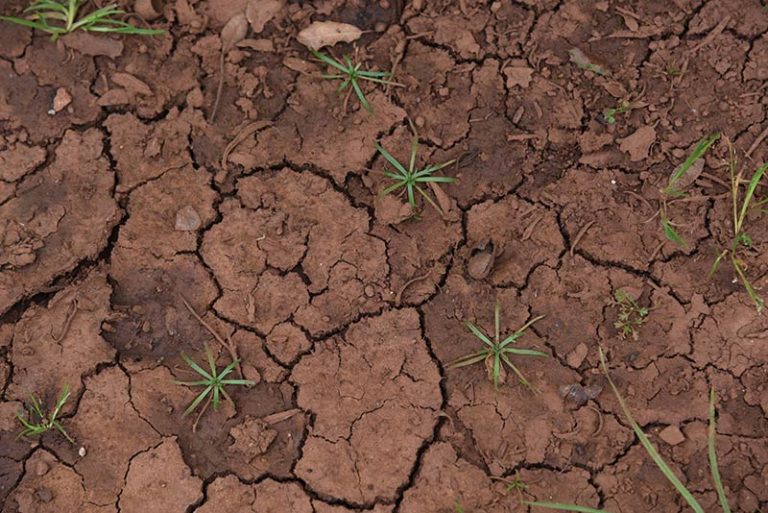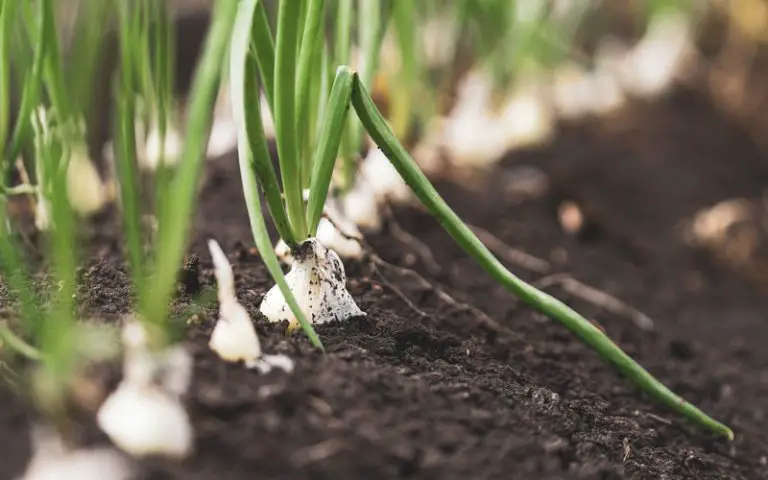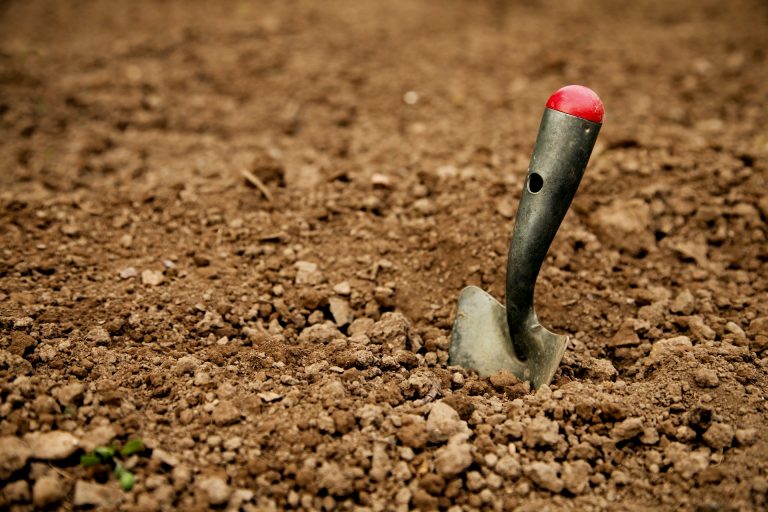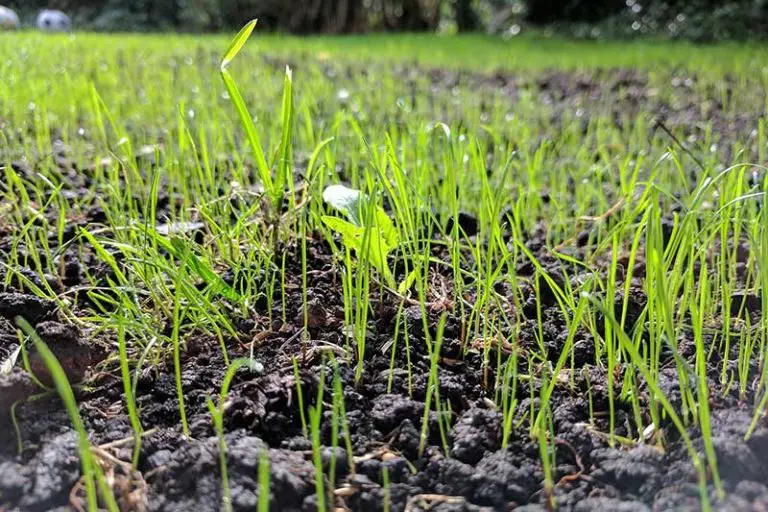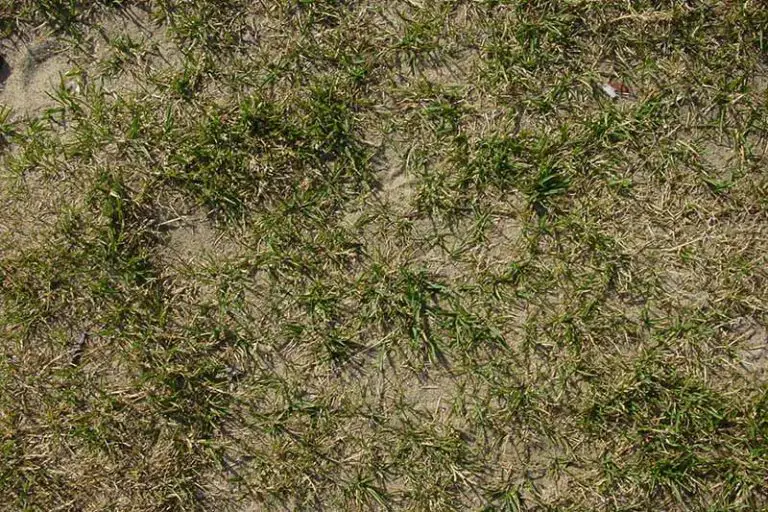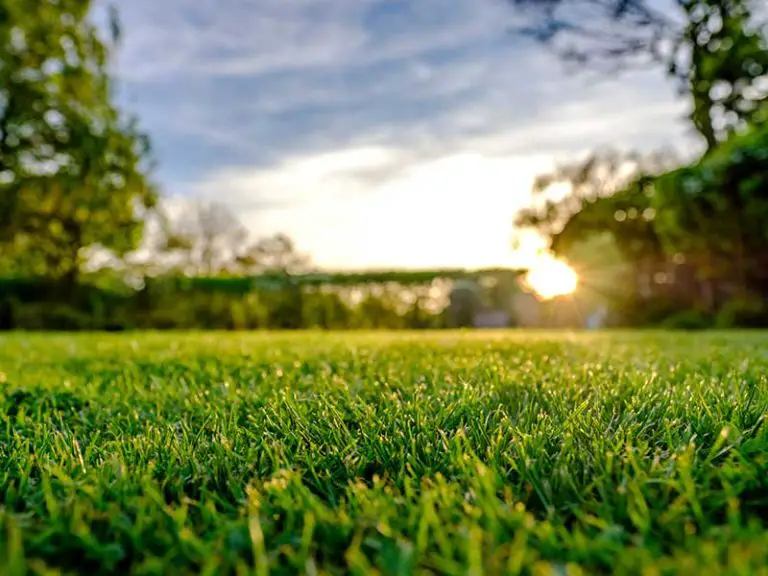Discovering Your Soil Type: A Complete Guide
Being the literal foundation of the plant life in your lawn and garden, your soil type has a huge impact on how your grass, shrubs, and crops grow. Different types of soils are composed of different types of solid matter. Therefore, they all hold differing properties when it comes to water retention, nutrient availability, and pH levels. This is why it’s important to know what type of soil you have when trying to grow a yard full of healthy, thriving crops.
The six main types of soil include sandy soil, clay soil, silty soil, peat soil, chalky soil, and loamy soil. The type of soil you have in your yard depends on the type of rock from which the soil was originally formed.
This article explains how soil is formed in the first place, followed by an explanation of the six main types of soil, their pros and cons, and specific growing tips for each one. We have also provided several tests you can use to identify the type of soil you currently have in your yard.
How is Soil Formed?
Soil forms from rocks, being the end product of a process known as weathering. This is the erosion that happens naturally to large rocks over time due to external conditions such as the weather. The rock particles then go through several more stages of breaking down, before eventually forming healthy, biodiverse soil. The entire weathering process, from large rocks to healthy soil, can take thousands to millions of years to complete.
At the first stage of the weathering process, the large rocks are broken down into smaller rock fragments through natural erosion. This erosion can happen via physical, chemical, biological processes; for example, physical weathering is a result of weather conditions like heavy rain, winds, or waves; chemical weathering is the effect of chemical reactions in the rocks that change their mineral composition; and biological weathering is thanks to living organisms like plants, animals, and microorganisms that all gradually aid the breakdown of the rocks.
When the weathering process is complete, the rocks end up as what we consider to be ‘dirt’. At this stage, this dirt contains no living organisms, nutrients, or water, and is unable to support any type of life. Before it can be considered soil, the dirt has to go through the next stage of the process; it must mix together with organic matter from dead leaves, twigs, and animals, known as humus. This matter is filled with living organisms and nutrients that bring the dirt to life; after this final stage, it becomes the living, self-sustaining ecosystem that we call soil.
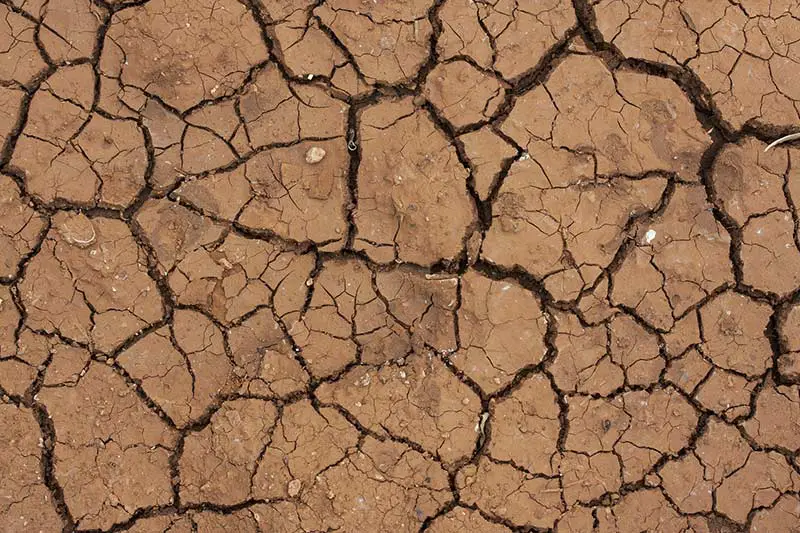
How Are There Different Types of Soil?
Different types of soils exist as they form from different types of rocks. Therefore, the type of soil that is most prevalent in any given area depends on the type of rock that is also the most prevalent there.
As we’ve provided a bit of background to how soil forms, you should now know that all soil starts off as large rocks. The type of bedrock your area sits upon is where all of the natural soil in your area originates from. For example, if you live in a coastal area close to the beach, it’s more likely that you’ll have sandy soil on your lawn. In areas where there is a lot of limestone, it’s more common to have chalky soil.
Due to their differing compositions, these different types of soils all have their own properties, with some being better for growing than others. It’s important to know which type of soil you have in your lawn or garden before attempting to grow anything. Similarly, identifying what type of soil you have can help you to troubleshoot issues with new or established growth; a lawn or garden area that’s failing to thrive is likely suffering from less-than-optimal soil.
Types of Soil Explained
The main types of soils include sandy soil, clay soil, silt soil, peat soil, chalky soil, and loamy soil. We have explained these soil types and their individual advantages and disadvantages below.
1. Sandy Soil
Sandy soils have a light and gritty texture. They’re usually made up of rock fragments that originate from larger rocks of granite, quartz, and limestone. This type of soil is most often found in coastal areas close to beaches.
The main advantages of sandy soils are that they drain well and are quick to dry after an overly wet period. They are quick to warm up in spring making them the ideal soil type for those attempting to grow spring crops.
Although sandy soil is well-draining, this feature is also this type of soil’s biggest downfall. Due to having larger particles, sandy soil has a hard time holding onto nutrients and water. It is much more prone to leaching, meaning much of the water and nutrients you add from irrigation and fertilization are lost to nearby waterways before your grass or plants have a chance to take them up.
Advantages of Sandy Soil
- Warms up fast in spring
- Easy to cultivate
- Well-draining and quick to dry
Disadvantages of Sandy Soil
- Low in nutrients
- Too much drainage causes fertilizer runoff
- Too much drainage prevents plant roots from absorbing water
- Tends to be acidic
Plants that Grow Best in Sandy Soil
- Root vegetables (carrots, potatoes, parsnips)
- Commercial crops (peppers, squash, collard greens, lettuce, tomatoes, zucchini, strawberries)
- Flowering plants (tulips, hibiscus, sun roses, tree mallow)
How to Grow Grass or Plants in Sandy Soil
When trying to grow plants or grass in sandy soil, the key is to improve the soil’s ability to retain water and nutrients. You can do this by amending the soil with slow-release organic fertilizers and compost. Another highly effective method to improve water retention is to mulch the soil; there is a range of matter that you can use as mulch, such as straw, grass clippings, or leaves.
You should also aim to apply less water and fewer fertilizers to the soil, instead increasing the frequency of how often you add them. The best type of fertilizer for sandy soils are those that contain greensand, kelp meal, or glacial rock dust.
2. Clay Soil
Clay soils are the heaviest soil type due to their high clay content. When dry, these soils take on a rock-hard texture, and when wet, they become sticky and lumpy.
Clay-heavy soils are made up of tightly packed particles of the smallest size in relation to other types of soil. Because of these properties, clay soils are usually the most challenging type of soil for gardeners to work with. This is in spite of the great advantages of clay-heavy soils; they have excellent water and nutrient retention properties, holding onto water and nutrients for longer.
However, there are quite a few drawbacks to clay-heavy soil that make it challenging to work with. Clay-heavy soil is poor draining, meaning it has the tendency to hold onto too much water for too long. In the tightly packed soil, the high water content pushes out other essential elements like air and nutrients. In the same vein, clay soil is highly susceptible to becoming compacted; grass and plants struggle to grow in compacted soil as it lacks the spaces necessary for the plants to grow strong, extensive root systems.
Advantages of Clay Soil
- Nutrient-rich
- Holds onto nutrients increasing availability to plants
- Excellent water retention properties
Disadvantages of Clay Soil
- Tends to hold onto too much water
- Slow draining
- Highly susceptible to compaction
- Tends to be alkaline
Plants that Grow Best in Clay Soil
- Summer vegetables
- Ornamental trees and shrubs
- Fruit trees
- Perennial plants (bergamot, aster, flowering quince, Helen’s flower)
How to Grow Grass or Plants in Clay Soil
As we’ve just explained, clay soils can be one of the most challenging types of soil to work with. However, it is possible to improve the growing condition of clay-heavy soil using some of the following techniques.
For your grass, you can vastly reduce compaction in clay soils by aerating your lawn annually each fall. This creates new pathways for water, air, and nutrients to circulate the soil and reach your grass at root level. Use lawn amendments that are rich in microbes to promote the breakdown of nutrients in the soil.
For garden beds and other crops, amend clay soils by adding compost and other microbe-rich organic matter to them. Never work on the soil when it’s wet, as this can significantly impact soil compaction. Also, consider planting a cover crop in the cool season to protect your soil from the effects of the weather.
3. Silty Soil
Silty soils can be considered the halfway point between sandy and clay-heavy soils. These soils are made up of particles of rock and other minerals.
Silty soil is highly fertile, holding onto nutrients better than sandy soils do. When dry, silty soil has a soft, floury feel; when wet, it’s smooth and malleable, holding its shape for a short while after you compress it in your hand. As the texture of silty soil is smoother than sandy soil, the former possesses better water retention properties. It is also much easier to cultivate than clay-heavy soils, due to its fine, soft texture.
However, this fine texture leaves silty soils more prone to compaction and soil erosion as the particles are easily shifted. A proper drainage system is necessary to combat these issues. On top of this, silty soil has a tendency to form a hardened crust on the soil surface.
Advantages of Silty Soil
- Easy to cultivate
- Well-draining
- Holds onto moisture well
Disadvantages of Silty Soil
- Susceptible to compaction
- More prone to soil erosion from rain or irrigation
- Has a tendency to form a crust
Plants that Grow Best in Silty Soil
- Almost all types of vegetable and fruit crops
- Grasses and perennials (mahonia, New Zealand flax)
- Moisture-loving trees (birch, willow, cypress, dogwood)
How to Grow Grass or Plants in Silty Soil
As it is so susceptible to compaction, avoid walking on silty soil when it’s wet. If your lawn or garden contains silty soil, the key is ensuring the area has a proper drainage system; this reduces soil and nutrients lost to erosion from adverse weather conditions like wind or rain. Another way to further improve the drainage, structure, and nutrient content of silty soil is to amend it with compost.
4. Peat Soil
Peat soils are dark and feel damp, soft, and spongey. This is due to the peat that they contain; peat is a spongey material that is made primarily from decomposing plant matter in wetlands.
Peat soil heats up quickly during the spring, making it another preferable soil type for growing spring crops. On top of this, soil with a high peat content is highly retentive of water. The only caveat with this is that proper drainage is necessary to ensure it doesn’t hold onto too much water.
Another major drawback of peat soil is that it tends to have a low pH level, being highly acidic. Acidic soils such as those containing peat suffer from a slower decomposition process; this results in the soil having a lower nutrient content. For this reason, gardeners often mix peat soil with lime and other nutrient-rich organic matter to counteract its acidity.
Advantages of Peat Soil
- Heats up quickly in spring
- Excellent water retention properties
- Has good structure for growing plants
Disadvantages of Peat Soil
- Can retain too much water
- Tends to be highly acidic
- Typically has a lower natural nutrient content
Plants that Grow Best in Peat Soil
- Vegetable crops (brassicas, root crops, salad crops, legumes)
- Some types of shrubs (heather, camellia, witch hazel, rhododendron, lantern trees)
How to Grow Grass or Plants in Peat Soil
As we’ve said, peat soil generally benefits from having a proper drainage system to prevent it from holding onto too much water. You may need to dig drainage channels if you’re working in planting areas with peat soil. The most effective amendment to reduce the acidity of peat soil is the addition of limestone.
5. Chalky Soil
Chalky soils are typically larger grained than other soils, taking on a stonier texture. These soils form in areas that overlay chalk or limestone bedrock and contain high amounts of calcium carbonate.
Chalky soil is highly free-draining, meaning it’s extremely unlikely to ever flood or hold onto too much water. However, this property of chalky soil also causes it to lose much water and fertilizer to leaching.
On top of this, the biggest issue with chalky soils is that they tend to be highly alkaline, falling higher on the pH scale. Excepting the few plants that thrive in alkaline soils, most plants will suffer from a condition called ‘lime-induced chlorosis’. This is because highly alkaline soils affect the availability of iron and manganese in the soil to the nearby plants; without enough of these nutrients, plants and grasses see stunted growth and may begin to turn yellow or brown. Alkaline soils such as chalky soils must be amended with a substance like sulfur to lower their pH level.
Advantages of Chalky Soil
- Can be highly fertile
- Rarely floods or becomes waterlogged
- Can be moisture-retentive if balanced with clay
- Best for growing alkaline-loving crops
Disadvantages of Chalky Soil
- Tends to be too alkaline for most plants
- Much of the nutrients unavailable to plants due to high pH
- Has poor water retention
Plants that Grow Best in Chalky Soil
- Many vegetables (cabbage, beets, spinach, sweetcorn)
- Some shrubs (weigela, pinks, lilac)
How to Grow Grass or Plants in Chalky Soil
Chalky soil can form part of an excellent growing medium for alkaline-loving plants if present with a high proportion of clay. Alternatively, you can amend the alkalinity and make the soil suitable for most other plants using pH-lowering materials like sulfur. To further improve the workability and water-retention properties of chalky soil, you can add organic humus like compost or mulch.
6. Loamy Soil
Loamy soil, a.k.a. ‘the gardener’s best friend’, is arguably the best type of soil you could have in your yard. It contains an ideal balance of sandy, silty, and clay particles. Loamy soils have a fine texture and feel slightly damp to the touch.
Due to its balanced composition, loamy soil provides the perfect growing medium for pretty much all grasses, plants, and shrubs. This type of soil is highly fertile, has ideal drainage properties, and is generally very easy to work with. It warms up quickly in spring and retains moisture effectively throughout summer.
Loamy soil essentially holds all of the benefits of sandy, silty, and clay-heavy soils without their drawbacks. The different types of matter complement each other in an ideal balance, eliminating the negative aspects of each soil type. All that is necessary to keep loamy soil healthy is to amend and fertilize it with organic matter regularly; loamy soil can be slightly acidic, but it’s easy to keep the soil in optimal growing range using organic amendments.
Advantages of Loamy Soil
- Warms up quickly in spring
- Creates drought resistance throughout summer due to water retention properties
- Holds nutrients well creating highly fertile soil
- Has ideal structure for the circulation of air and water
Disadvantages of Loamy Soil
- Some loamy soils contain stones depending on how they were formed
- Can be acidic
Plants that Grow Best in Loamy Soil
- Climbers
- Bamboo
- Perennials
- Most vegetable crops
- Most berry crops
How to Grow Grass or Plants in Loamy Soil
Being the ideal growing medium, there is little you need to do to improve the condition of loamy soil. As you should with any soil, amend loamy soil regularly with organic matter to keep it in ideal growing condition. Test your soil regularly to ensure it remains within the optimal pH range for your plants; if your test reveals your soil is acidic, add lime to raise its pH level.
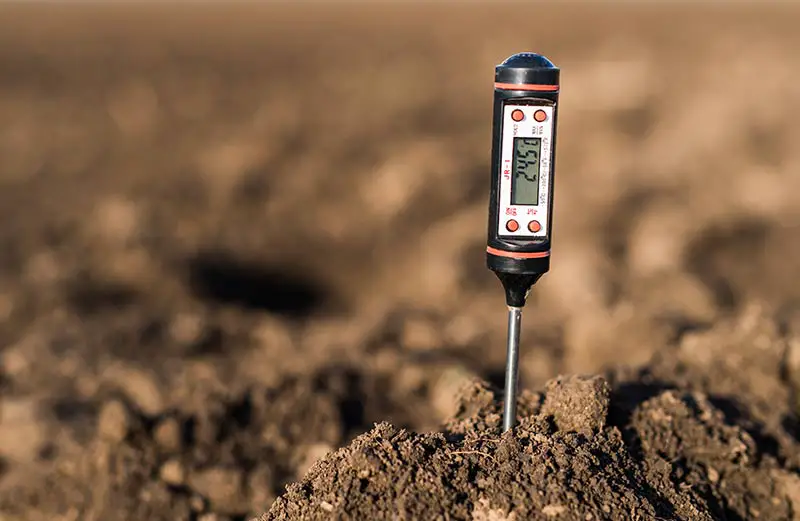
Testing Your Soil to Determine Your Soil Type
If you’re unsure, you can find out what type of soil you currently have in your yard by testing it using one of the two following means.
Your first option is to send a sample to a professional testing laboratory. Organizations such as your local extension office offer soil testing, either free of cost or for a low fee. They will provide you with detailed accurate information about the pH level, nutrient content, and composition of your soil sample.
Alternatively, there are some tests you can conduct yourself to reveal the solid content that your soil contains. Although they generate less accurate results, they’re easy to carry out and provide a rough idea of your soil’s composition. Carry out one or several of the following tests to discover what type of soil you have in your backyard.
Test 1: Water Test
The water test is the most straightforward to carry out.
Simply pour some water onto a sample or section of your soil and watch how it drains.
> If the water appears to drain quickly, it’s likely that the soil has a high sand or gravel content.
> If it seems to take a long time for the water to sink in, it’s more likely you’re working with clay-heavy soil.
Test 2: Squeeze Test
The next test is called the squeeze test. As the name suggests, all you need for this test is a hand.
Take a handful of soil as a sample and gently compress it by clenching your fist. Release your grip from the sample and observe its appearance and texture.
> If the soil feels sticky and retains the same shape after you release your fist, you’re working with clay-heavy soil.
> If the soil is smooth and somewhat holds shape for a short period after releasing your grip, it’s either loamy or silty soil.
> Soil that feels spongey to the touch is likely to have a high peat content.
> If the soil feels gritty and falls apart in your hand, it’s sandy soil.
Test 3: Settle Test
For the settle test, you will need to gather a few extra pieces of equipment.
Take a handful’s-worth sample of soil and place it into a transparent container. Add some water to the sample, shake it well, and then leave the mixture to settle for about 12 hours.
> Cloudy water with a layer of settled particles at the bottom of the container indicates clay-heavy or silty soil.
> Water that is mostly clear with the majority of the soil particles settled in a layer at the base of the container indicates that the soil is sandy.
> Water that is slightly cloudy with a thin layer of particles at the bottom and a thicker layer of particles floating at the top indicates the soil is peaty.
> Pale grey water with a layer of whitish-grey grit-like particles at the bottom is an indication of chalky soil.
> Relatively clear water containing multiple layers of settled particles with the finest particles at the top indicates it’s loamy soil.
Test 4: Testing Soil pH
Aside from determining soil type, you should test your soil’s pH as part of your regular lawn or garden maintenance.
Soil pH is important as it has an effect on the availability of nutrients in the soil to your plants. Most soils fall somewhere between 4.0 and 8.5 on the pH scale; most plants thrive in soils that have a pH between 6.5 and 7. This is the pH level at which minerals and nutrients thrive naturally and are most available to most plant species.
Again, you can either send your soil off for professional testing, or test your soil pH yourself. This can be done through DIY methods or using a store-bought soil pH testing kit. Follow the instructions for your chosen testing method and use the results as an indication of your soil’s composition.
> If your soil pH falls below 6.5, meaning it’s highly acidic, this indicates you have sandy, peaty, or loamy soil.
> If your soil pH measures to be above 7.0, meaning it’s more alkaline, this is an indication of chalky or clay-heavy soil.

